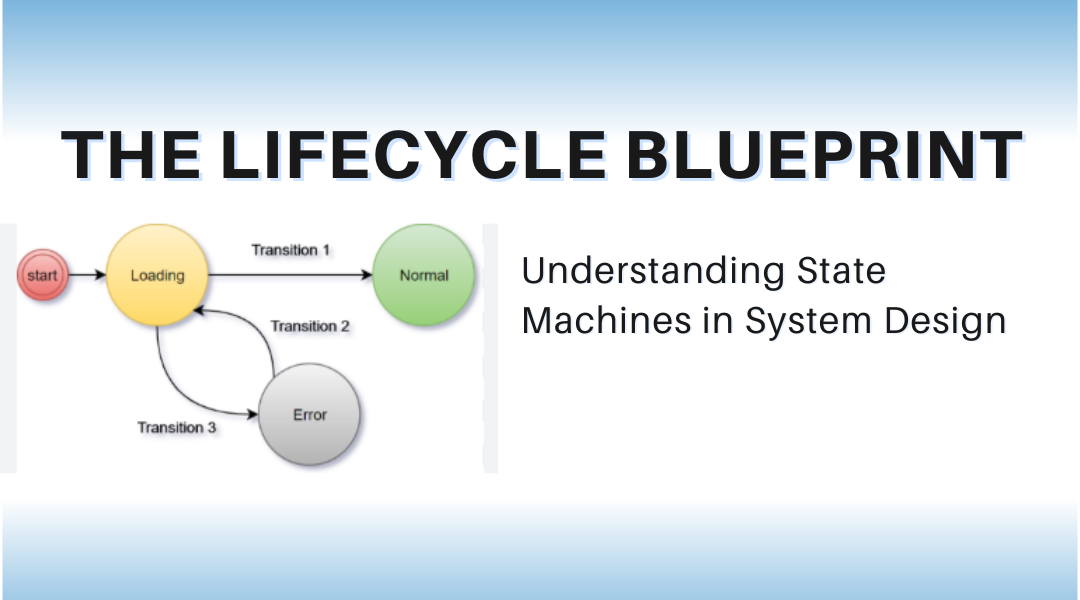Imagine your coffee maker in the morning. It sits idle until you press “brew,” then gurgles to life, heats water, releases steam, and finally clicks off when your carafe is full. That’s a state machine in action – a concept that’s everywhere once you know how to spot it.
Decoding the Language of States
States aren’t just conditions – they’re moments when a system catches its breath between actions. Picture your smartphone:
- Deep Sleep: Screen off, barely sipping power
- Lock Screen: Awake but guarded
- Active Use: Bright display, apps running hot
- Thermal Throttle: Overheating and slowing down
Each state has its own rules about what can happen next. Your phone won’t overheat while sleeping, just like your coffee maker won’t start brewing without water.
What Makes States Change?
Transitions happen for three reasons:
- The Push (Events)
- Physical button press
- Sensor trigger (like your thermostat noticing temperature drop)
- The Rules (Guard Conditions)
- “Only unlock if fingerprint matches”
- “Shift gears only when RPM > 3000”
- The Consequences (Actions)
- That satisfying “click” when your car doors lock
- The beep your microwave makes when done
Real-World Mechanics
Let’s dissect something more interesting than traffic lights – an electric skateboard:
- Off → Standby (power button press)
- Standby → Riding (weight detected on deck + remote paired)
- Guard condition: Battery > 10%
- Riding → Regenerative Braking (remote trigger)
- Action: Feed energy back to battery
- Any state → Error (motor overheats)
See how this explains why your board sometimes refuses to start, even when powered on? The state machine reveals the hidden rules.
Why Engineers Swear By These Diagrams
During a recent e-bike project, we discovered through state modeling:
- Riders kept getting stuck in “walk mode” because we forgot a transition back to normal
- The battery would refuse charges below 0°C – a guard condition no one had documented
- 80% of customer complaints traced to just two missing state transitions
Drawing Your First State Machine
Pro Tip: Start with the “oh crap” states first – those unexpected moments when:
- Your drone loses signal mid-flight
- The insulin pump gets an air bubble
- The elevator gets stuck between floors
Then work backward to the happy path. You’ll catch more edge cases this way.
Beyond Basics: Advanced Patterns
- Hierarchical States
Your smartwatch has an “Exercise” superstate containing:- Running
- Cycling
- Swimming (with waterproofing activated)
- Parallel States
A nuclear reactor control system might track:- Temperature state and
- Safety system state independently
- History States
Ever notice how some devices “remember” where you left off? That’s a history marker in action.
The Dark Art of Transition Timing
Good state machines specify:
- Instant transitions (emergency stop)
- Delayed transitions (oven cooldown period)
- Forced timeouts (screen dimming after inactivity)
I once debugged a industrial printer that would jam because two states were fighting over a 0.5 second window – visible only in the state diagram.
Your Turn: Map Something Simple
Try sketching the states of:
- Your car’s keyless entry system
- A YouTube video player
- A parking meter
You’ll start seeing state machines everywhere – in your appliances, software, even your morning routine. That’s the power of this modeling tool: it turns chaotic behavior into predictable patterns you can design and debug.
Remember: Every complex system is just a collection of simple states waiting to be discovered. Your job is to map the transitions between them.
